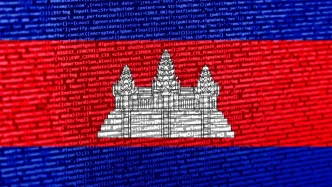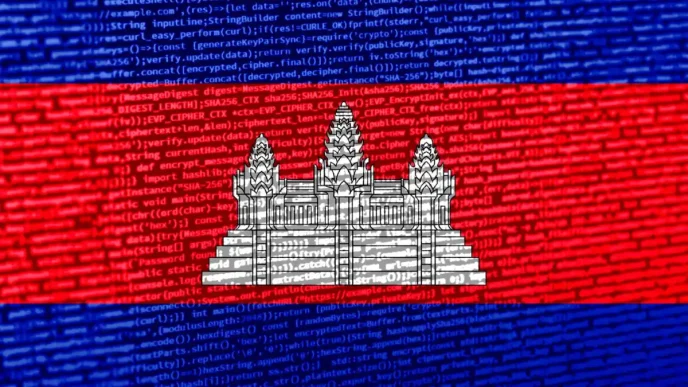In a landmark move to deepen technological ties, the University of Technology Sydney (UTS) has announced the establishment of the Australia-Vietnam Strategic Technologies Centre, a cutting-edge research hub set to be based at the Posts and Telecommunications Institute of Technology (PTIT) in Hanoi. Backed by the Australian Department of Foreign Affairs and Trade (DFAT) and Vietnam’s Ministry of Science and Technology, the centre aims to position both nations at the forefront of global connectivity through pioneering work in 5G and emerging 6G technologies, alongside robust cybersecurity frameworks.
This initiative, unveiled on Monday, marks a significant step in the Vietnam-Australia Comprehensive Strategic Partnership, reflecting a shared commitment to digital transformation, economic growth, and regional cyber stability. With Nokia as a founding partner, the centre will leverage advanced tools like the Digital Automation Cloud (DAC) to drive next-generation connectivity and innovation across multiple sectors, from manufacturing and healthcare to education and agriculture.
A Vision for Digital Leadership
The establishment of the centre follows a pivotal 2023 visit to UTS Tech Lab by Nguyen Manh Hung, Vietnam’s then-Minister of Information and Communications. During discussions, both sides recognised the urgent need for deeper collaboration in research and training to address the challenges and opportunities of rapid technological advancement. Hung, as cited by UTS, emphasised the timely nature of this initiative, aligning it with Vietnam’s national goals under the Party Central Committee’s Resolution 57, which prioritises digital transformation and science-technology as key drivers of socio-economic progress.
“This collaboration comes at a crucial time for Vietnam,” Hung reportedly said, highlighting how advancements in connectivity are essential to realising the country’s vision for future growth and prosperity. His remarks underscore the strategic importance of the centre, not only as a hub for technological innovation but also as a symbol of Vietnam’s broader ambitions to become a digital leader in the region.
Australian Ambassador for Cyber Affairs and Critical Technology Brendan Dowling echoed this sentiment, describing the centre as a catalyst for economic growth, security, and digital inclusion. “It is poised to drive transformation and enhance international cyber stability in our shared region,” Dowling noted, pointing to the potential for the partnership to reshape the technological landscape of South East Asia and beyond.
Bridging Academia, Industry, and Policy
At its core, the Australia-Vietnam Strategic Technologies Centre aims to foster collaboration among leading academics, industry experts, and policymakers. UTS Vice-Chancellor and President Professor Andrew Parfitt described the initiative as a unique opportunity to capitalise on strategic technology collaborations, aligning with UTS’s vision of global impact and commitment to social justice, inclusion, and the UN Sustainable Development Goals.
The centre’s director, Associate Professor Nguyen Ngoc Diep, outlined an ambitious agenda that includes the establishment of a state-of-the-art 5G research lab, strategic technology seed funding, and scholarships focused on 5G innovation. Additional initiatives include a mentorship course for women in technology and a 5G-driven cultural exchange programme, reflecting a holistic approach to technological advancement that prioritises inclusivity and cross-cultural understanding.
Beyond connectivity, the centre will explore emerging fields such as artificial intelligence (AI), semiconductor research, chip design and testing, clean energy, and environmental engineering. These areas are seen as critical to addressing global challenges while fostering innovation in both nations. Diep also highlighted plans to roll out practical applications that could transform industries ranging from transportation and energy to agriculture and healthcare.
Strengthening Cybersecurity in a Digital Age
A key pillar of the centre’s mission is the development of a robust cybersecurity framework to ensure safe and responsible digital adoption. As cyber threats continue to evolve, the partnership between Australia and Vietnam aims to enhance cooperation in cybercrime prevention and build stronger digital defence capabilities. Joint research and industry-government synergy will play a central role in this effort, equipping both nations to navigate the complexities of an increasingly interconnected world.
The focus on cybersecurity also extends to promoting online safety and digital inclusion, particularly for vulnerable communities such as women and children. By prioritising these groups, the centre seeks to address disparities in access to technology and ensure that the benefits of digital transformation are shared widely across society.
This emphasis on security and inclusion aligns with broader regional concerns about the risks posed by rapid digitisation. South East Asia, with its diverse political and economic landscapes, faces unique challenges in balancing technological progress with the need to protect citizens from cyber threats. The Australia-Vietnam partnership could serve as a model for other nations in the region, demonstrating how bilateral cooperation can address shared vulnerabilities while fostering innovation.
Geopolitical and Economic Implications
The establishment of the Strategic Technologies Centre carries significant geopolitical weight, particularly in the context of South East Asia’s growing importance in global technology supply chains. Vietnam, with its rapidly expanding tech sector and strategic location, has become a key player in regional and international discussions on digital infrastructure. The partnership with Australia, a close ally of Western powers, signals Hanoi’s intent to diversify its technological alliances beyond traditional partners like China and South Korea.
Economically, the centre is expected to drive growth by fostering innovation and creating opportunities for collaboration between Vietnamese and Australian businesses. The focus on 5G and 6G technologies, in particular, could position Vietnam as a hub for next-generation connectivity in the region, attracting investment and talent. If successful, this could accelerate Vietnam’s digital economy, which is already one of the fastest-growing in South East Asia, with e-commerce and digital payments seeing exponential growth in recent years.
However, challenges remain. The ambitious scope of the centre’s agenda, from AI research to cultural exchange programmes, will require sustained funding and coordination between multiple stakeholders. Questions also linger about the scalability of the initiatives and their ability to deliver tangible outcomes in the short term. While the involvement of Nokia and other industry partners provides a strong foundation, the success of the centre will ultimately depend on the ability of both nations to align their priorities and navigate bureaucratic hurdles.
Moreover, the geopolitical context adds a layer of complexity. As global powers vie for influence in South East Asia, initiatives like the Strategic Technologies Centre could be viewed through the lens of broader strategic competition. While the partnership is framed as a bilateral effort focused on mutual benefit, some observers may interpret it as part of a wider effort by Western-aligned nations to counterbalance China’s dominance in regional tech infrastructure. Such perceptions, if unaddressed, could complicate the centre’s work and its ability to foster genuine collaboration.
A Step Towards a Connected Future
Despite these challenges, the Australia-Vietnam Strategic Technologies Centre represents a bold step towards a more connected and secure future. By harnessing the transformative power of 5G and emerging 6G technologies, the partnership seeks to address pressing global issues while strengthening ties between two nations with shared interests in the Indo-Pacific region.
For Vietnam, the centre offers a chance to accelerate its digital transformation and cement its position as a regional leader in technology and innovation. For Australia, it provides an opportunity to deepen engagement with South East Asia, a region of growing strategic and economic importance. Together, the two nations are laying the groundwork for a partnership that could redefine the digital landscape of the region.
As the centre begins its work, its impact will be closely watched by policymakers, industry leaders, and communities in both countries. If it delivers on its promise, it could serve as a blueprint for international collaboration in strategic technologies, demonstrating how shared vision and mutual trust can drive progress in an increasingly complex world. For now, the announcement of the centre stands as a testament to the power of partnership in addressing the challenges and opportunities of the digital age.














